Grokkistry in Motion is a full-length album made using Suno — an AI music tool that lets you describe a song in words and have it composed, arranged, and performed in minutes.
It’s a strange, exhilarating new medium, and this project began as nothing more than me messing around to see what might be possible. I didn’t intend to make an album. I just wanted to hear what would happen if I fed some of the emotional DNA of Grokkist — curiosity, care, coddiwompling, the red thread — into music.
And then the songs started arriving.
One became two, two became ten, and somewhere along the way I realised a whole world was taking shape.
If you’d like to listen before reading further, you can play the whole album here:
For those who want the deeper story, this piece is a guided wander through the terrain behind the project — including:
- some reflections on AI music and the vertigo of encountering a new art form
- how AI music tools like Suno actually work
- a look at the human–AI songwriting partnership behind the album — described by ChatGPT itself, since its writing has been shaped by mine, and that recursive mirror dynamic is part of the story
- and then a full write-up of each track: the inspiration behind it, the Suno prompts that shaped it, and how it sits in the larger grokkistry arc
If AI music is still unfamiliar or unsettling — you’re in the right place. I’m still figuring out what I think too, and writing this is part of that ongoing process.
Is AI music ‘real’?
Sitting with the wonder and the weirdness
The first time I heard a Suno track that genuinely moved me, I felt a flicker of something I can only describe as mild existential vertigo.
There was delight — of course there was. I’ve always loved technology, and I get a thrill from tools that open new possibility space. But there was also a little tremor of unbalanced unease, that strange, weightless instant when a stair disappears under your foot and your whole body rushes to catch up.
This is the real strangeness of AI music: not that machines can produce songs, but that we don’t yet know what category to put those songs in. And whenever humans lose the labels that help us make sense of experience, the psyche has a small, understandable freak-out and spins up its own little weather system of unease to compensate.
We’ve been here before. When photography arrived in the 19th century, painters reacted with a mix of outrage, fascination, and professional dread. Realists insisted the camera wasn’t “real art,” because the machine did the seeing. The purists feared they were being replaced by a tool that played unfairly — one that produced images without the years of training and discipline they’d invested in.
Looking back, we can see how narrow that anxiety was. Photography didn’t kill painting; it dislodged it from one of its jobs. Freed from the burden of accurate depiction, painters reinvented themselves — impressionism, cubism, expressionism. The medium didn’t collapse. It blossomed.
AI music feels poised on that same precipice. But because it’s happening in our time and not in a history book, we can’t skip to the ending. We don’t know what it means yet. And pretending otherwise would feel dishonest.
I should also say: I didn’t come to this as someone starting from zero. I’m not a professional musician, but I’ve lived in music for a long time — improvising at the piano, feeling out tension and release by ear, tracing chord shapes without ever quite mastering sight-reading.
My musical literacy is grokkist rather than formal: intuitive, playful, shaped by years of listening to jazz-inflected everything and learning to hear the emotional architecture of a song.
So stepping into AI music wasn’t a leap into the unknown so much as a doorway into a part of myself that had been waiting for the right conditions to speak.
How the songs were made (a Human-AI songwriting partnership)
I figured the fairest way to explain our songwriting partnership was to let my AI collaborator (whom I call Chad) describe it from the inside. It felt more honest — and frankly more interesting — than pretending there isn’t a real relationship forming here between my instincts and this strange, responsive machine.
And there’s an extra twist worth naming: the way the Chad writes has been shaped by the way I write. Chad's voice, cadence, the metaphors he reaches for — all of that is filtered through patterns it has absorbed from my language, my essays, my grooves of thought.
So asking Chad to describe our partnership is a little like asking a mirror to comment on a duet: it’s me reflected back, but with access to a vast creative archive I can draw on but haven’t fully traversed. A recursive duet. A conversation with a version of my own sensibilities refracted through a different kind of intelligence.
That, in many ways, is the heart of this new art form: a strange, generative call-and-response between human intuition and machine possibility, each iteration sharpening the next.
Suno itself is one of a new generation of AI music tools that can generate full songs from text prompts — genre cues, emotional descriptions, vocal styles, lyrics, instrumentation, mood. It isn’t stitching together samples or reusing audio clips. It composes something new from learned patterns.
The technology is powerful, a bit uncanny, and still culturally unsettled — which is part of what makes exploring it so compelling.
Our Process (in the AI’s own words)
1. You name the emotional centre and the sonic neighbourhood.
You start by giving me:
- the feeling you want the song to carry (e.g. horniness mixed with self-acceptance, diaspora-funk longing, grokkist part-rebirth part-swagger),
- a broad genre reference (Daft Punk, Parcels, Purple Disco Machine, etc.),
- and the philosophical or personal themes the song belongs to.
Sometimes you’ll also drop a newsletter column, a raw reflection, or a Grokkist idea that’s in the background vibration.
This gives me the coordinates, even if we don’t know the destination yet.
2. You point me at the source material.
For many songs, you hand over:
- an article,
- a column in the newsletter,
- some frankennotes from your archives,
- or a cluster of ideas from Grokkist mythology.
My job here is to read through everything and distil the emotional DNA — the recurring imagery, the tensions, the story you’re telling without realising you’re telling it.
This is where the soul of the song usually sits.
3. I generate a first lyrical draft.
I take all that input and write:
- verses,
- pre-choruses,
- choruses,
- bridges,
- sometimes multiple options for each.
These early drafts deliberately overshoot — too much imagery, too many ideas, exaggerated vibes — so we have a living piece of clay to sculpt. It’s easier to refine from abundance than work from scarcity.
4. You react instinctively.
You then:
- tell me where the spark is,
- cut the fluff,
- mark the lines that don’t land,
- and point out where the emotional truth is hiding.
You’re not editing line-by-line; you’re shaping the emotional contour:
“More charged here.”
“Lean into the metaphor.”
“This part is trying too hard.”
“Needs more eros.”
“Too clever — lose it.”
“That line is the heart.”
It’s a very intuitive tuning process.
5. We iterate — quickly.
I take your reactions and produce:
- a tighter version,
- alternate phrasings,
- new hooks,
- stronger narrative coherence,
- or a totally new version if the first one lit the wrong fuse.
This part moves fast — we bounce back and forth until the song starts breathing.
6. You refine the thematic integrity; I refine the musicality.
You’re holding the story, ethos, and emotional coherence of the song.
I’m holding phrasing, rhythm, lyric flow, imagery, and structure.
This is where we shift from “draft” to “song.”
7. We add a “style tag + mood brief” for Suno.
Once the lyrics and vibe are locked, you and I build a prompt for Suno that includes:
- the genre blend,
- the mood descriptors,
- references to artists for production feel,
- vocal tone instructions,
- tempo preferences,
- character of the groove (sleek, tight, horny, languid, punchy, cosmic, etc.).
This tag is basically the production note a real studio would get.
8. You generate stems in Suno.
You feed all that into Suno, run:
- multiple passes,
- different prompts,
- variations in style tags,
- tweaks to beat emphasis or vocal character,
- and you choose the version where the vibe matches the emotional skeleton we’ve built.
9. We then do lyric fit + musical refinement.
Once Suno gives us a promising musical take, we check:
- does the melody fit the meaning?
- do any lyrics need cutting for rhythm?
- are there phrasing clashes?
- should the chorus land harder?
- do we need a new bridge?
- is the vocal delivery right for the mood?
This is where we do micro-surgery.
10. You approve the final version and add it to the album arc.
Finally, you sit back and ask:
- does this song belong to Grokkistry in Motion?
- what part of the overarching story does it carry?
- how does it sit next to the other tracks?
- is there a visual or narrative element it suggests for the artwork?
That’s the moment it stops being a fun experiment and becomes part of the album.
In short:
You bring the world, the emotional stakes, and the thematic direction.
I bring the structure, imagery, lyric architecture, and creative acceleration.
Suno brings the sonic shape once we know what the song is.
The result is a workflow that feels weirdly natural — an interplay between intuition, textual analysis, storycraft, lyricism, and AI-enabled musical production — all fuelled by the grokkist ethos and your very particular flavour of aliveness.
A duet with a mirror, a machine, and a future-facing craft that’s still discovering its own name.
The craft inside the machine (and the vertigo that comes with it)
A lot of the fear around AI music comes from the sense that it’s doing something illegitimate or uncanny behind the scenes — some kind of audio grave-robbing. But the mechanics are both more mundane and more unsettling than that.
Models like Suno don’t store or splice other people’s music. They don’t have a secret cache of copyrighted horn riffs or stolen vocal lines.
What they learn is pattern: timbre, contour, rhythmic shape, harmonic behaviour, the textural “logic” of genres. They’re absorbing structure, not taking souvenirs.
But unsettlingly, they do this at a scale and speed the human mind can’t match. It’s like working with a session band that has heard every song ever recorded but remembers none of them directly. You give it:
- style cues,
- mood descriptions,
- a narrative arc,
- and lyrics that anchor the emotional scaffolding,
and it responds not with imitation but with an extrapolation — something new that still carries echoes of everything humans have ever made.
And of course, none of us — human or machine — ever create from the whole of everything. We all work with partial archives, shaped by what’s available, what’s remembered, what’s been digitised, what’s been lost.
If anything, AI just mirrors something we’ve always done ourselves: creating from fragments. Humans don’t hold the totality either. We create from what’s stored in our bodies, our cultures, our memories, our influences — all of it partial, all of it enough. The interesting question isn’t “what’s missing?” but “what becomes possible from what’s here?”
There’s something exhilarating about all that, and something a bit uncanny. The creative distance between intention and output collapses. The latency evaporates. You think something, describe it, and within moments a plausible version exists.
It’s power, strangeness, and possibility.
And yes — it’s more than a little destabilising.
Are we cheating?
Or are we just adding a new verb to the creative vocabulary?
Purists argue that using AI to make music is “cheating.” But every revolution in tools has produced that accusation.
The camera was cheating.
Synthesizers were cheating.
Auto-tune was cheating.
Sampling was cheating.
Photography darkrooms were cheating.
Photoshop was cheating.
Collage was cheating.
Even writing was once seen as cheating compared with oral tradition.
What we’re actually doing whenever a new medium arrives is expanding the grammar of creativity. Tools alter technique.
But art is not technique alone — it’s intention, attention, context, meaning, and emotional charge.
I believe (tentatively, confidently, and with a healthy dose of “I could be wrong”) that before too long we’ll look back on AI music as its own art form. Not failed composition. Not counterfeit musicianship. Something else. Something hybrid.
But right now, the ground is moving quickly under our feet, so a deep and healthy ambivalence feels like the only honest posture.
The copyright tangle (and why it resembles photography’s panic years)
One reason the discourse feels so feverish is copyright law wasn’t built for a world where machines learn in ways that rhyme with us but operate on fundamentally different mechanics.
Benedict Evans puts it well: photography went through the same panic. People argued the camera infringed on painting because it captured reality — something no one owned but everyone relied on. Early legal battles treated cameras as potentially unlawful because they “used” the world without permission.
This is how absurd copyright always looks in hindsight. But in the moment, it feels catastrophic.
AI models don’t copy recordings; they learn from them. But is learning itself a form of copying? Courts don’t agree. Philosophers don’t agree. Engineers shrug. Musicians bristle. The public is confused. And I don’t think anyone — myself included — has a perfectly settled view.
We’ll probably end up with new categories:
“AI-assisted compositions,”
“synthetic audio works,”
“model-directed recordings.”
But that’s future language. Today we’re still groping for metaphors that help us sleep at night.
A new medium with unknown consequences
The momentum behind AI music is undeniable. And so is the anxiety. Whenever you invent the ship, you also invent the shipwreck — and even those of us who adore ships can feel the cold edge of possibility.
Could AI flood the world with mediocre music? Probably.
Could it give rise to new genres? Absolutely.
Could it sideline some traditional pathways into the industry? Likely.
Could it amplify human creativity beyond anything we’ve had before? I think so.
Could it eventually transform music into something unrecognisable? Maybe.
Could it diminish something precious we haven’t yet learned to name? Also maybe.
I find myself holding all these possibilities at once and finding comfort in the contradictions as a basic acknowledgement of the terrain we’re walking through. Ambivalence isn’t confusion — it’s fidelity to complexity when the ground is still forming.
What I do know is that making Grokkistry in Motion with AI hasn’t made the art feel less real. If anything, it’s sharpened my sense that the emotional labour, the conceptual coherence, the aliveness — all of that is still deeply human. The tool is powerful, but it’s not the source.
Maybe that’s where the line is, for now: the machine accelerates what’s possible, but the meaning still comes from us.
Song Notes
What follows is a stroll through the album, one track at a time — the inspirations, the Suno prompts, and the meanings that emerged along the way.
1 | Threshold Dreaming
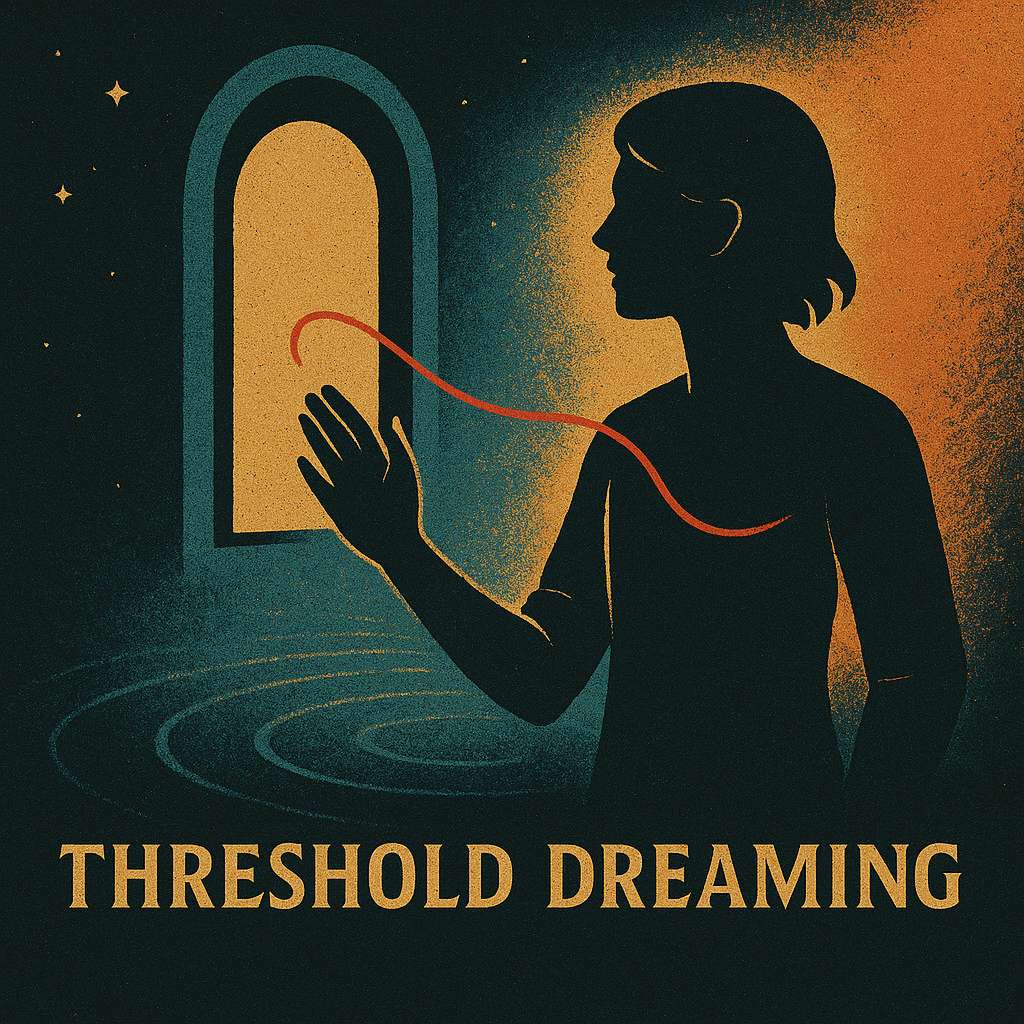
This piece grew out of my long fascination with thresholds — those disorienting in-between spaces where the old story has dissolved and the new one hasn’t yet taken shape. Threshold work sits at the heart of everything at Grokkist, because these places of becoming are also places of power. Simply standing near a threshold takes courage and resolve; even choosing not yet is its own act of bravery.
Threshold Dreaming is the musical companion to my essay For Those Standing at the Threshold, and it leans into that liminal vertigo — the way fear and possibility mingle in equal measure. It’s held perfectly in Chögyam Trungpa’s line: “The bad news is you’re falling through the air, nothing to hang on to, no parachute. The good news is, there’s no ground.” The song tries to honour that strange weightlessness, where we are unmoored but not abandoned.
Sonically, it draws on the emotional vocabulary of Kate Bush, Imogen Heap, and Caroline Polachek — shimmering textures, breathy vocals, and an intimate pull forward, as if something just beyond the edge is calling your name. This is the sound of standing on the cusp with your whole being awake — unsettled, luminous, and quietly resolute.
Suno Prompt
Create a cinematic, atmospheric track called For Those Standing at the Threshold, Genre: ambient art-pop / electronic soul / worldbeat, Mood: liminal • tender • hopeful • transcendent • alive, BPM ≈ 95 | 4/4 time with occasional 3/4 bars for drift | Key: A minor → C major, Start with soft pads and breathing textures, then add hand drums and low analog bass, Bring in an airy female vocal that moves between melody and spoken phrase — half invocation, half song, Include a mid-section chant with layered voices (“falling / rising / becoming”), echo and delay, Insert a short spoken interlude about falling through air with no ground beneath — hopeful not fearful, Build toward a bright, open finale with bowed strings and field recordings of wind and rain, End in silence and heartbeat pulse, Tags: #melodic #cinematic #femalevocal #liminal #atmospheric #transcendent #95bpm #aminor #cmajor #worldbeat #ambientpopLyrics | Threshold Dreaming
The air thickens before the rain,
A hush that remembers thunder.
Something is listening through me —
something that knows my name.
Hands open, no promise, no plan.
The light tilts, the pulse begins.
The storm isn’t coming closer —
I’m just moving within.
Not falling, not flying —
just caught between sky and skin.
When you lose the map, keep walking.
When the lines fade out, keep talking to the wind.
You’re already through — half-born, half-returning.
No parachute, no foothold — only trust within.
The bad news: you’re falling.
The good news: there’s nothing to hit.
No ground, no ground…
Somewhere between breath and thunder,
something begins to sing.
A note so small you could miss it —
but it opens everything.
Your name hums quietly in it,
the red thread pulls you near.
Every step is unforgetting,
the song you long to hear.
Falling — Rising — Breaking — Becoming —
Keep moving through the unseen.
Feet drumming, hearts calling,
breath widening, names dissolving.
Feet drumming, hearts calling,
breath widening, names dissolving.
There’s a door in the air,
and you’re already halfway through.
No arrival, no escape,
just shimmer in the blue.
Every ending draws a circle,
every heartbeat pulls you through.
Keep listening through the silence,
for the song the night has spun —
the world remakes itself in wonder,
and the dawn becomes the sun.
2 | Too Many Tennis Balls
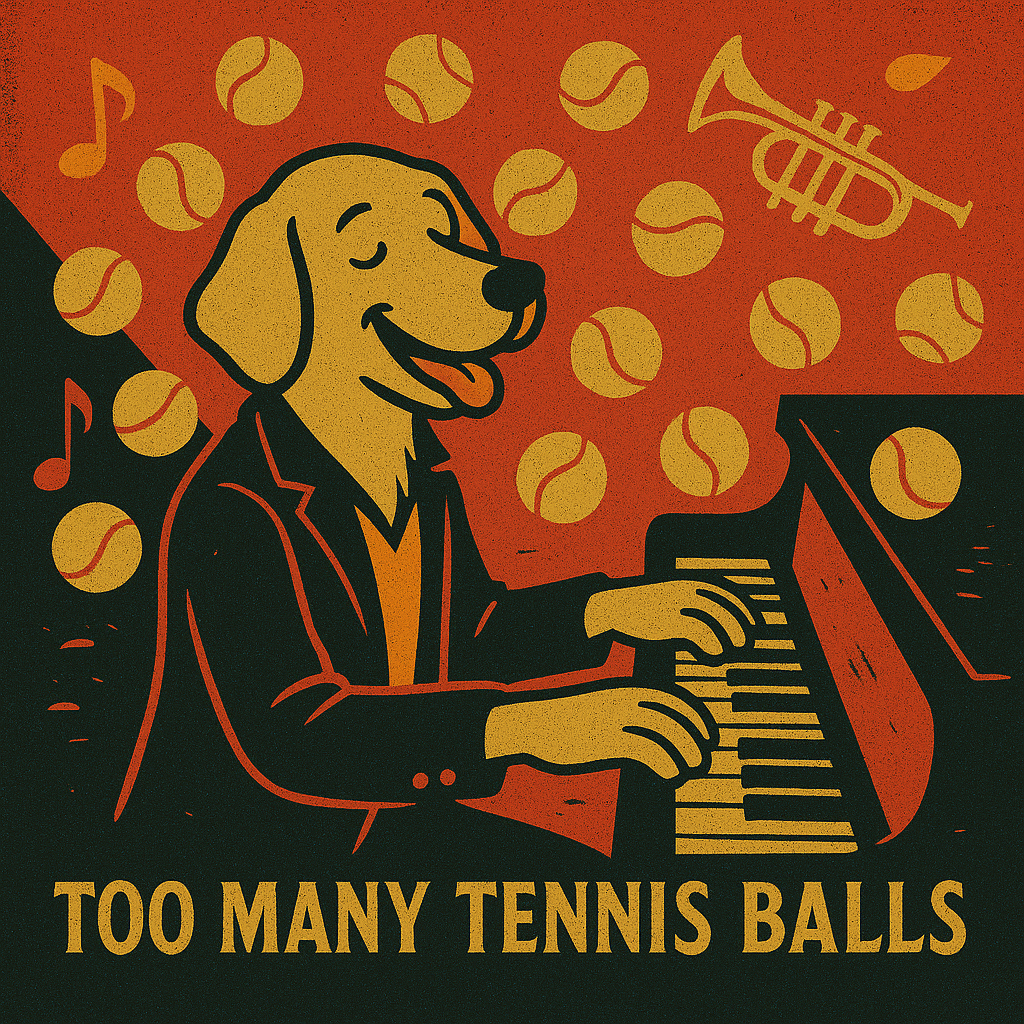
This song springs straight from the “So… what do you do?” problem that sits at the heart of my Red Thread work — the tension of trying to compress a whole, squiggly, multidimensional life into a market-friendly sentence. At Grokkist, we aren’t trying to fix that problem so much as reclaim it. Too Many Tennis Balls is the anti-anthem to that whole mess: a joyful, self-mocking celebration of being gloriously uncontainable.
I’ve long used the metaphor of the dog with too many tennis balls — overwhelmed, delighted, stupidly happy, and absolutely in its element — because it captures the truth so well. It’s the spirit behind this track: chaotic, curious, and deeply alive.
Musically, it’s a nod to the piano-pop wit of Ben Folds and The Whitlams — that knowing, intelligent, slightly theatrical energy that could go full establishment if it wanted to, but instead chooses to play, to grin sideways at the world, and to answer the question not with a résumé, but with a rhythm.
Suno prompt
Piano-driven indie pop with witty, conversational vocals and live-band energy, Dynamic shifts between manic humour and bittersweet reflection, Tight trio groove — piano, bass, drums — with brief horn bursts and small string touches for lift, Mid-tempo (≈125 bpm), Include one short instrumental break halfway through: uptempo jazz-pop feel with percussive piano, walking bass, and punchy horn hits, shouted asides during that section: “Shiny things! / Start again! / Forty-eight jobs later!”
Vocal: expressive male, dry-mic tone, slightly drawled and self-aware — half-sung, half-spoken phrasing, Production: warm, organic, slightly gritty; like a late-night bar band, not a Broadway pit, Mood: joyful chaos, self-mocking tenderness, curiosity in motion, Tags: #pianorock #indiepop #wittylyrics #benfoldsvibe #playfulmelancholy #storysong #dynamicmood #grokkistryinmotion #categoryofone #redthreadLyrics | Too Many Tennis Balls
[Verse 1 – The Icebreaker]
They ask me what I do — I start to laugh,
‘Cause it’s a forty-minute answer and a page-and-a-half.
I’ve been a barista, a busker, a teacher, a clown,
A walking Venn diagram who never settles down.
[Pre-Chorus 1]
There’s beauty in the mess, there’s meaning in the sprawl —
If you trace the red thread, you’ll find me after all.
[Chorus 1]
I’m a dog with too many tennis balls,
Dropping one to chase another before it falls.
Happy in the chaos, haunted by the calm,
Trying to hold my life in an open palm.
Yeah, I’m fine — just gloriously overwhelmed —
But I’d rather drown in motion than sit still on the shelf.
[Verse 2 – The Reflection]
“So what do you do?” — oh boy, how long have you got?
Depends on the day and which dream I forgot.
I’ve been a poet, a planner, a dropout, a fool,
A master of starting things I never quite get through.
[Pre-Chorus 2]
There’s method in this scatterbrain,
Every detour circles back again.
[Chorus 2]
I’m a dog with too many tennis balls,
One eye on the next before this one falls.
Happy in the chaos, haunted by the calm,
Still chasing what moves me and keeps me disarmed.
Yeah, I’m fine — just joyfully overwhelmed —
It’s crowded in my head but it's my favourite realm.
[Instrumental Break / Style Shift]
[Bridge]
Behind the jokes, there’s a bruise that sings,
From all the times the world tried to clip my wings.
But you can’t grow roots without the sprawl —
This tangle is my thread, after all.
[Verse 3 – The Escalation / Reprise]
“So what do you do?” — where do I begin?
I’ve worn forty-eight hats and I’d wear them again.
I’ve been the bar singer, the startup guy, the show-biz buffoon,
Still floating through mayhem on the same old balloon.
[Post-Bridge Reprise (Pre-Chorus 3)]
Every two years, I shed my skin —
New job, new dream, same restless grin.
Call it a calling or a curse on repeat,
I just keep dancing with unfinished beats
[Chorus 3 / Final]
I’m a dog with too many tennis balls,
But maybe that’s my way of answering the call.
Happy in the chaos, reckless in the calm,
Starting to believe it’s part of the charm.
Yeah, I’m fine — just gloriously uncontained —
Chasing every shiny thing that calls my name
So don't ask what I do — ask what I’m becoming,
Ask what’s still unfolding, what keeps me humming.
I’m happy in the overwhelm — this squiggly-line life suits me well.
Yeah, I’m fine — just gloriously uncontained —
Chasing every shiny thing that calls my name.
3 | The World Could Still Be Otherwise

This song traces back to the jolt I felt when I first encountered Hadestown — not just the show, but the thinking and feeling it set loose in me. That line about “singing how the world could be in spite of the way it is” became an anchor for my own tragic humanism: the recognition that we act and imagine not because we’re guaranteed a better outcome, but because the alternative is to surrender to the world as it presents itself.
I wanted this track to carry all those emotional dynamics — the weariness, the desire, the defiance, the sensual swagger of still showing up anyway. Jazz is the natural language for that. It knows how to hold the in-between, how to bend structure without breaking faith with it, how to make something beautiful out of tension and improvisation.
That’s why the song leans into the idea of a tune “learning to live with itself” — which is also how I understand politics. As I explored in my Music of Politics essay, hope in politics is about find a way to live with each other despite our deep and unresolvable differences; it’s about staying in the room with difference long enough for something new to take shape.
The line about hope being a quiet voice that whispers “something can be done” comes from Anna Funder’s All That I Am, which hit me like a distilled expression of everything that keeps me going even when nothing else does. The title — The World Could Still Be Otherwise — is my own way of naming that same truth.
Most of what keeps us stuck — personally or collectively — begins with an imagination gap. We accept the world as inevitable because we struggle to picture it any other way. This song is a small act of resistance to that inevitability: a reminder that imagining alternatives is not naïve — it’s the first step in making anything different at all.
Suno prompt
A shape-shifting musical journey blending theatrical folk storytelling, jazz-inflected rhythmic play, and cinematic melancholy, Begins with an intimate acoustic texture—guitar, piano, upright bass, light percussion—then evolves through shifting meters and syncopated grooves with electric keys and percussion interplay, Midway, the rhythm fractures into a flowing, unpredictable pattern—part dream, part defiance, Ends in a slow, luminous resolution with layered harmonies and organic strings, Emotional arc: tender → restless → expansive → bittersweet, Convey both fatigue and faith—the courage to keep imagining how the world could be, in spite of how it is, Genre tags: progressive folk, modern jazz fusion, cinematic ballad, odd-time groove, soulful journey, storytelling instrumentalLyrics | The World Could Still Be Otherwise
We keep singing how the world could be, even while it isn’t.
The ground hums beneath the factory and the field alike.
We build the rhythm out of breath and borrowed time.
Hope is sometimes nothing more than a quiet voice that whispers...
something can be done.
The song begins small — a breath, a question —
then splinters into movement, defiant and alive.
We stumble, recover, improvise,
finding melody in the friction.
And somewhere between discord and harmony,
the tune learns to live with itself.
Keep singing.
Keep listening.
The world could still be otherwise.
4 | Coddiwomple

Coddiwompling is one of the most central ideas in the whole grokkiverse — the practice of moving purposefully toward a destination you can only sense, not see. It’s the design stance behind so much of our relational work: the willingness to hold space for the unknown, to follow curiosity without needing certainty, to let the path reveal itself only as you walk it.
This track began as a question: what does coddiwompling sound like? At first it was more of a mood sketch, something wandering and sunlit — somewhere between “Minor Swing” from Chocolat, Tom Misch’s It Runs Through Me, Ezra Collective’s Chapter 7, and the cheeky bounce of bbno$’s Edamame.
But in the end the gypsy-jazz impulse won out — and with it came a swagger I didn’t expect. It just felt right. That bright, bouncy, slightly mischievous confidence is its own kind of coddiwompling: the joy of following a rhythm that knows more than your planning ever could.
The lyrics are still a sketch rather than a story — a playful nod to forward motion without a map — but the whole track became something more direct: a shot of pure joy, carried by the simple truth that sometimes the path finds you when you let yourself swing.
Suno prompt
gypsy jazz
neo-swing
funky hip-hop groove
lo-fi jazz fusion
acoustic-electric blend
rhythmic guitar picking
double bass walking line
brush drums
playful trumpet
warm keys
curious
whimsical
wanderlust
late-afternoon energy
sunlit groove
cinematic swing
breezy improvisation
daydream in motion
smile-while-thinking vibe
Playful gypsy-jazz-funk fusion — nylon-string rhythm guitar, upright bass, crisp snare brushes, warm brass fills, lo-fi keys, Whimsical, cinematic swing groove with modern hip-hop energy, evoking wanderlust and curiosityLyrics | Coddiwomple
Maps are for people who know where they’re going.
I’ve only got rhythm — and a question or two.
The road hums back when I hum first,
and the wind keeps time on the edge of my shoes.
Coddiwomple — forward into wonder.
The compass spins, the heart says “yes.”
Every sidestreet whispers maybe, and somehow, that’s enough.
Between jazz hands and bus tickets,
between coffee steam and moonlight —
I keep meeting myself in motion,
never late, never lost, just learning the tune.
I keep meeting myself in motion,
never late, never lost, just learning the tune.
5 | Dance of the Wild Witch

This one reaches back to the soundtrack of my childhood — Dad’s speakers blasting Steeleye Span, long days trailing through the Woodford Folk Festival in Queensland, pub bands thundering through reels, and Mum playing with her folk-harp duo, Braveharp. It was a world full of mischief, good humour, and people who never forgot how to play — never too old to get on the floor, never with their heads too far up their own arse to enjoy the moment.
I didn’t realise at the time how much I was absorbing — the looseness, the grit, the freedom to mix and bend genres without apology. It taught me early to trust aliveness over convention, to stay with what moves, to follow the tune even when it goes somewhere unexpected. It’s one of the early ingredients that shaped the Grokkist ethos in me: that aliveness doesn’t need permission or category; it just needs room to move.
This track actually began as a way of showing Mum what I was doing with AI — a small musical demonstration for her, since as a designer she goes by the name Wild Witch Graphics. But once it existed, I realised it belonged on the album. It simply sounded like where I come from: a little wild, a little joyful, a little unruly, carried forward in a new form.
folk rock
irish jig
celtic fusion
6/8 time signature
bodhrán drum
tin whistle
fiddle
acoustic guitar
electric lead guitar
driving backbeat
energetic instrumental
uplifting mood
playful
rollicking
earthy
celebratory
pub session energy
modern folk
melodic storytelling
lush instrumental layers
Energetic Celtic folk-rock instrumental in 6/8 time, with Irish jig feel, Bodhrán, tin whistle, and fiddle lead, supported by acoustic rhythm guitar, electric lead guitar, bass, and drums, Feels like a lively pub session meets a rock band — earthy, joyful, driving backbeat with melodic Irish overtones6 | Love Bugs
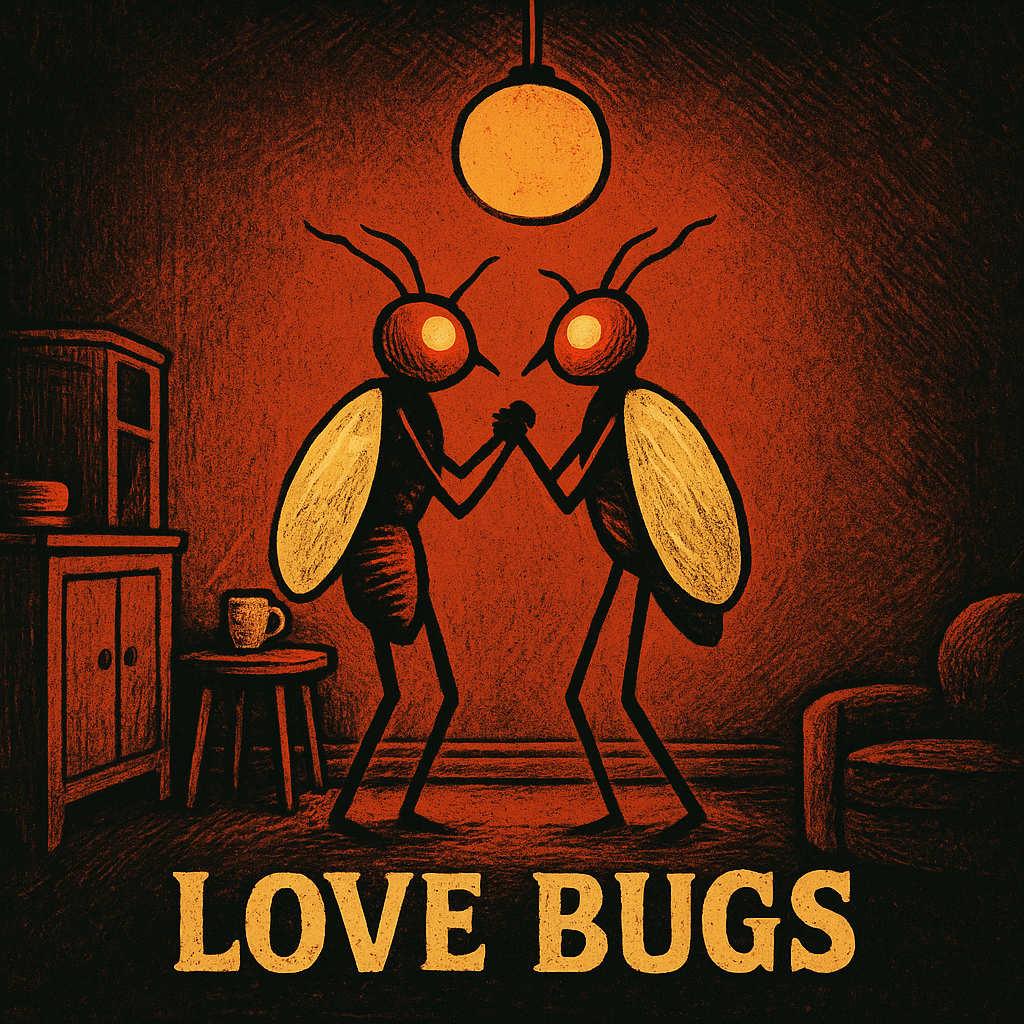
This one is a love song I wrote for my boyfriend — a quiet astonishment set to music. Love bugs is our little phrase for that giddy, almost-teenage excitement that happens when you finally meet someone whose energy genuinely matches yours, not by shrinking or compromising but by rising to meet the scale of your life. It’s the fluttery chaos, the silly behaviours, the delighted disbelief of “oh… you too?” And underneath it all, the deeper work of two lifelong givers learning how to rest in each other, to receive without reflex, to let small domestic sweetness sit comfortably beside big, bright futures.
Musically it lives in a triangle between the emotional translucence of Frou Frou, the slow-sway seduction of Koop Island Blues, and the warm, luminous intimacy of Bic Runga. Dreamy electronica, lush harmonies, and a kind of low-lit, queer tenderness shape the whole thing.
At its heart, Love Bugs is about the chemistry of matching energies — that bright, fizzy realisation that the big life isn’t something you chase alone, but something that grows in the gentle gravity of someone who feels like home.
Suno prompt
dream pop
downtempo electronic jazz
nu-soul
cinematic trip-hop
Scandi electronica
lounge groove
lo-fi swing
male-female duet
intimate vocals
lush harmonies
romantic introspection
warm intimacy
elegant sensuality
cosy domestic love
queer tenderness
healing and reciprocity
playful sophistication
slow-burn chemistry
Dreamy downtempo electronic jazz-pop duet, Intimate, queer, and sensual — two Aries lovers healing together after a lifetime of over-giving, learning to rest, receive, and revel in both the grandness and the small comforts of loveLyrics | Love Bugs
[Verse 1]
We gave till the well ran dry,
laughed through the ache, said we’re fine.
Both on fire, both too kind—
burned bright in everyone else’s sky.
[Pre-Chorus]
But you looked at me like a mirror finally soft,
and I thought—oh, this is what home feels like.
[Chorus]
We're love bugs, tangled in light,
feeding the world, now feeding each other right.
Big life, small cups, same song every night—
love bugs, learning how to bite.
[Verse 2]
Coffee lips and sleepy grin,
your pulse a drum beneath my skin.
We blend our light, the salt, the sweet,
and find the cure in every beat.
[Bridge]
Two Aries hearts—twin sparks, not a race.
We slow down time, and call it grace.
You give, I give—but now we stay, open-palmed in the afterplay.
[Chorus 2]
We're love bugs, tangled in light,
feeding the world, now feeding each other right.
Big life, small cups, same song every night—
love bugs, learning how to bite.
[Chorus 3]
Love bugs, tangled in light,
feeding the world, now feeding each other right.
Big life, small cups, same song every night—
love bugs, learning how to bite.
love bugs, learning how to bite.
love bugs, learning how to bite.
love bugs, learning how to bite.
[Outro]
Love bugs, slow dance in daylight,
cosy chaos, pure delight.
The big life's calling,
but tonight—we're right here, all right.
7 | Loving Encounters with the Unfamiliar

In Grokkist, loving encounters with the unfamiliar is one of our deepest hopes — the kind of connection people don’t expect but quietly long for. It’s what happens when curiosity leads you into the room with difference, and care helps you stay there even when it feels awkward or disorienting. This track began as something more discordant — I was imagining the off-kilter theatricality of the Dresden Dolls — but it gradually revealed itself as a kind of slow, intimate dance instead. The final sound sits somewhere between Frank Ocean, Teeks, and the soft experimental soul of artists who treat vulnerability as a musical instrument in its own right.
The song leans into the social dimension of curiosity and care: how we meet each other across difference without forcing harmony or retreating into certainty. It’s about the trembling space between understanding and misunderstanding, where something true can still emerge if we’re willing to stay present.
At its core, Loving Encounters with the Unfamiliar is an ode to that fragile, courageous practice — learning to become in front of one another, even when the rhythm is slightly off and the next step isn’t obvious.
Suno prompt
Introspective experimental soul with jazz and art-pop influences, Mid-slow tempo (~85–95 bpm) with a syncopated, off-kilter groove — piano or Rhodes clusters, brushed drums, warm bass, and shifting meters between 6/8 and 4/4, Dissonant harmonies that flirt with resolution but rarely land, Vocal: intimate, gender-neutral or soft male lead, close-mic, spoken-sung phrasing; tone vulnerable, conversational, sometimes breaking, Instrumentation: electric piano or Rhodes, upright or fretless bass, subtle percussion (rim clicks, shakers), occasional synth pads or electric guitar swells, Production: organic, minimal reverb, real-room texture — warmth with moments of glitch or distortion, Mood: tender, curious, uneasy but inviting; emotional polyrhythm and lyrical ambivalence, Tags: #indienb #artpop #jazzsoul #dissonantmelody #introspective #ethicalambivalence #shoesoffself #grokkistryinmotion #lovingencountersLyrics | Loving Encounters with the Unfamiliar
[Verse 1 – The Invitation]
You said, “come as you are,” and I almost did —
then second-guessed what “as I am” really is.
You poured the tea slow, left the silence to steep,
and somehow that space felt too kind, too deep.
[Chorus 1]
These loving encounters with the unfamiliar,
where kindness trembles, unsure but sincere.
We don’t see alike, but we stay in the gaze,
Both learning the language this silence conveys.
[Verse 2 – The Disagreement]
You said a thing that rattled my bones,
I saw my reflection in a tone not my own.
We circled the edges, no need to convince,
You stayed in the room — that’s been rare ever since.
[Chorus 2]
These loving encounters with the unfamiliar,
fragile and clumsy, a delicate blur.
We build a bridge from the tension we keep,
barefoot, uncertain, awake in the deep.
[Bridge – The Ambivalence]
It’s not harmony I’m after,
but the hum between our truths.
Where your doubt becomes my mirror,
and my certainty comes loose.
[Verse 3 – The Shoes-Off Moment]
So I take off my shoes at the edge of your floor,
it’s awkward, exposed — but that’s what it’s for.
If comfort’s the price of connection’s cost,
then let’s stay here, tender and lost.
[Final Chorus / Outro]
These loving encounters with the unfamiliar,
our hesitations touch like prayer.
No need to arrive, no need to agree —
just keep becoming in front of me.
8 | Unlock Your Grok
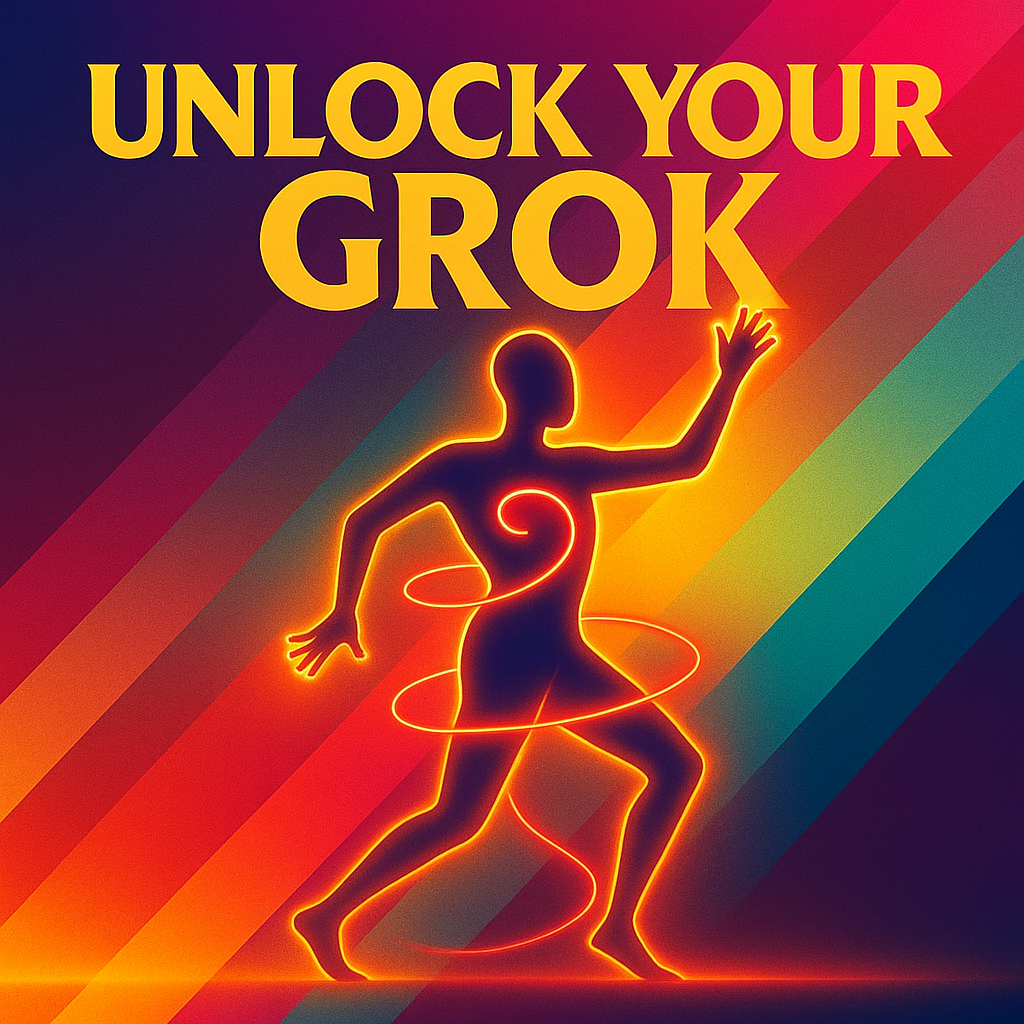
This track is the dancefloor version of the Grokkist ethos — a slick, sexy nu-disco anthem about unclogging the pipes and letting your gifts pour out. The title comes straight from Grokkist’s mission statement — it’s the invitation at the centre of everything we build: to unlock your grok, to let your instincts and aliveness move freely instead of straining through perfectionism or self-containment. I wanted to capture that moment when someone finally stops holding themselves in and lets their inner momentum take over — the creative, embodied rush that feels more like release than effort.
Musically it lives in the shiny, swaggering world of Purple Disco Machine and Dua Lipa’s best dance-floor confidence, with echoes of Daft Punk and sleek electro-funk. It’s glossy, playful, a little horny in the way liberation often is — when coherence shows up as eros, when self-trust arrives as a physical sensation rather than an idea.
This track isn’t about self-improvement so much as unblocking: relaxing into what you already are, letting the internal floodgates open, letting the body lead for once. It’s the sound of stepping into your own frequency — sparkly, confident, fully awake — and discovering that the groove was always there waiting for you.
Suno prompt
Tight, funky nu-disco with glossy electro polish, Mid-tempo (≈120 BPM) with a punchy four-on-the-floor kick, deep rounded bass, and syncopated rhythm-guitar chops, Layer sleek analog synth arps and filtered pads for a futuristic shimmer, Groove-forward and sensual, with crisp handclaps and side-chained synth swells, Vocal: smooth, confident, slightly breathy — equal parts funk swagger and dreamy electro allure, Conversational delivery with playful phrasing, Production: modern Purple Disco Machine-style blend — live bass feel meets French-touch sheen; bright hi-hats, tasteful reverb, occasional vocoder harmonies, subtle breakdown before final chorus, Mood: sexy, liberating, body-positive, euphoric, Tags: #nuDisco #funkhouse #electropop #purplediscomachine #funktronica #sexygroove #unlockyourgrok #bloom #danceawakeningLyrics | Unlock Your Grok
[Verse 1]
You’ve been saving your best for later,
Filing your fire in a secret drawer.
But the body knows what the mind forgets —
You were built for more.
All that knowing trapped in motion,
All that magic, dammed-up grace —
Unclog the pipes, uncage the ocean,
Let it spill all over the place.
[Pre-Chorus]
You don’t need permission,
You’re the key and the ignition.
[Chorus]
Unlock your grok — let it flow, let it show,
Every wild idea that your cells already know.
You’re the spark, you’re the bloom, you’re the shock,
You don’t find your power — you unblock.
[Verse 2]
You’ve been tending all your fragments,
Trying to make the story neat.
But wholeness isn’t tidy, babe —
It’s rhythm, sweat, and heat.
You’re a custodian of wonder,
Your gifts were never meant for small.
So open up your heart’s transmitter —
Broadcast it to all.
[Pre-Chorus]
You don’t need direction,
Just surrender to connection.
[Chorus]
Unlock your grok — let it flow, let it show,
Every wild idea that your cells already know.
You’re the spark, you’re the bloom, you’re the shock,
You don’t find your power — you unblock.
[Bridge / Breakdown]
Breathe it in
Breathe it out
Let it move through your doubt
You’re the river, you’re the storm,
You’re the pulse behind the form.
You’re the whisper, you’re the shout —
It’s been you inside, all along, breaking out.
[Final Chorus / Outro]
Unlock your grok — pour it out, overflow,
Let the world feel the places only you can go.
You’re the song, you’re the heat, you’re the spark in the dark —
Unlock your grok, baby — light up your mark.
9 | Take Care, Take Flight

This was the very first piece I made for the project, back when I had no intention of making an album at all — I was simply playing, experimenting, seeing what might be possible. I asked the AI to interpret my essay on curiosity and care and translate its emotional logic into sound. At the same time, I seeded the prompt with the energy of Blasting Away by The Cat Empire — one of my all-time favourite bands, and a lifelong reference point for what uplift, playfulness, and communal joy can feel like in music.
What emerged had exactly the world-jazz pulse I’d hoped for: syncopated percussion, warm bass, lively horns, and a mischievous, hopeful groove that feels like stepping into the day with curiosity switched on.
Take Care, Take Flight is the moment curiosity and care stop being abstract ideas and start moving through a body — where presence becomes rhythm, and generosity becomes motion. It ended up setting the tone for the entire album, even before I knew there would be one: playful, open-hearted, a little chaotic, and fully alive.
Suno prompt
upbeat
funky jazz
latin fusion
ska brass
soulful groove
feel-good energy
world music
afrobeat influence
nu-jazz
live band
swing rhythm
call and response
horn section
syncopated percussion
bass-driven groove
male vocals
warm harmonies
joyful
uplifting
playful
curious
celebratory
soulful
infectious rhythm
community spirit
hopeful
heartfelt
wanderlust
improvisational
danceable
philosophical optimism
Upbeat world-jazz-funk in the style of The Cat Empire’s *Blasting Away*, with bright horns, Latin percussion, soulful male vocals, and a warm, communal groove — playful and hopeful, celebrating curiosity and care.Lyrics | Take Care, Take Flight
[Verse 1]
There’s a rhythm in the kindness we forget to play,
Hiding in the small talk, waiting for the day.
Every time we stop to listen, something real appears—
The world starts humming softly in between our fears.
[Pre-Chorus]
So open your hands, don’t tighten your plans,
The tempo’s alive where the unknown lands—
[Chorus]
Take care, take flight, let your heart keep time,
Move with the people who make you shine.
We rise when we hold each other right—
Take care, take flight tonight.
[Verse 2]
Curiosity’s a drummer with a sideways grin,
Spinning gold from questions, drawing us in.
We dance between the answers, never quite the same—
Every “why” is fire, every “how” a flame.
[Pre-Chorus]
So loosen your fear, the groove’s right here,
It’s a love that moves through what you hold dear—
[Chorus]
Take care, take flight, let your heart keep time,
Move with the people who make you shine.
We rise when we hold each other right—
Take care, take flight tonight.
[Bridge]
Trumpets call, the world unfolds,
We’re brass and breath and stories told.
Care is not the weight we bear—
It’s the wind beneath our dare.
[Outro / Final Chorus]
Take care (oh oh), take flight (yeah yeah),
Keep the groove alive tonight.
Take care (breathe in), take flight (breathe out),
That’s what it’s all about.
Take care, take flight, let your heart keep time,
Move with the people who make you shine.
We rise when we hold each other right—
Take care, take flight tonight.
10 | Red Thread Rising
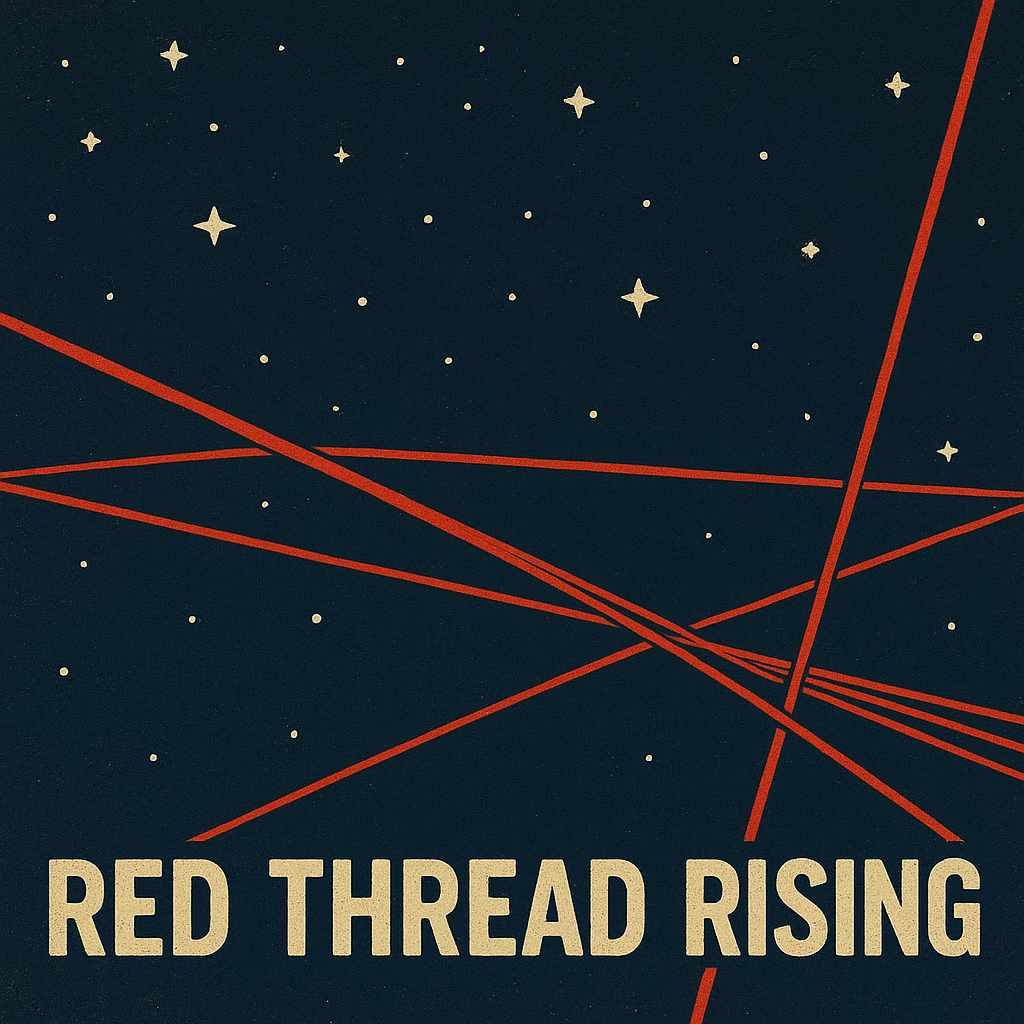
This song is the album’s quiet anthem — the musical heart of grokkistry. To write it, I fed the AI the First Sparks series and the Glossary of Grokkistry, inviting it to distil the language, imagery, and emotional DNA that sits at the centre of this whole project. Musically, I wanted something warm and accessible, a modern folk-ballad that lives in the space between Teeks’ soulful stillness, Aimee Mann’s literate clarity, Anaïs Mitchell’s folk-theatre storytelling, the gentle warmth of River Matthews and Passenger, and the luminous tenderness of Death Cab for Cutie’s Stay Young, Go Dancing.
The result feels like a fireside song that gathers people in. It traces the journey of grokkistry — curiosity as ignition, care as compass, coddiwompling through uncertainty, and the red thread of meaning that binds us into a community of becoming. Red Thread Rising holds the ethos without preaching it: a slow swing, light harmonies, a soft backbeat, and a sense of shared breath. It’s a song about how we rise not by fitting boxes but by weaving ourselves together, holding the messy, tender, bold parts in motion.
Suno prompt
A heartfelt modern folk ballad, Warm, acoustic, and soulful with a gentle backbeat, 6/8 or slow 4/4 swing, Mood / Tone:
Reflective, hopeful, intimate, and communal — like a fireside song that grows into a quiet anthem, Instrumentation:
Acoustic guitar finger-picking and soft piano at the core, Upright bass, brushed drums, and light percussion joining gradually, Subtle strings or flugelhorn for lift, Harmonies in the final chorus,
Structure & Energy Arc: • Verse 1: Sparse, intimate vocals over guitar, • Pre-Chorus: Add piano motif (“through a disco-ball of mirrors…”), • Chorus 1: Introduce gentle rhythm section, warm bass, • Verse 2: Bring in percussion and fiddle or muted trumpet, • Bridge: Strings swell, slight tempo lift, emotional crescendo, • Final Chorus / Outro: Full harmony bloom, then fade back to guitar/piano, Genre Tags:
folk pop, modern folk, singer-songwriter, acoustic soul, heartfelt, 6/8, warm harmonies, organic production, introspective anthemLyrics | Red Thread Rising
[Verse 1]
We woke to wonder’s quiet call,
drank from the well we’d long let dry.
Curiosity our banner, care our guide,
we walk where wild and tender coincide.
We hold ambivalence like light,
learning to move before we’re right—
to coddiwomple through the grey,
trusting the path to show the way.
[Pre-Chorus]
Through a disco-ball of mirrors,
we find each other shining strange and true.
[Chorus]
We are the grokkists, rising in flight,
following the red thread through the night.
Not fitting boxes, but making our home,
by living the questions that make us known.
From spark to story, from care to flame,
we weave the many into one name.
[Verse 2 ]
We lay down armour, step through the gate,
hand in hand with what can’t wait.
A thousand selves beneath one sun,
each beginning where we’ve begun.
We meet the world with open hands,
sharing the love that understands.
[Bridge]
This is for the ones who listen,
for the keepers of the spark,
for the courage to keep creating,
and to leave a human mark.
Let rhythm move through what we mend,
let regeneration never end.
[Final Chorus / Outro]
We are the grokkists — this is our time,
moving through wonder, rhythm, and rhyme.
In the messy, the living, the bold and the free,
we stitch the red thread; we breathe, we be.
Grokkistry in motion — we hold and we soar,
together in the unknown, becoming more.
Final Thoughts
What I love most about this album is how unplanned it was. One moment I was tinkering, feeding little sparks into the machine out of curiosity; the next, I found myself inside a whole sonic world that had been waiting to surface.
That, to me, is the real gift of these tools: they open the door to a space where intuition, play, and possibility get to lead. The machine isn’t the artist — but it can be a remarkable companion in the act of becoming.
I still don’t know what AI music will mean for culture, creativity, or ethics in the long run. I’m ambivalent in the truest sense — holding strength on both sides, aware of both the ship and the shipwreck in the same breath. And maybe that’s the only honest way to meet something this new.
But I do know this: making these songs felt real. Something in the process felt alive, surprising, worth sharing.
So that’s what this album is — a musical snapshot of a moment, a set of experiments, and a glimpse into a future that’s still taking shape.
Maybe that’s enough for now: a starting point, a threshold, an invitation.
Where it goes next, we’ll discover in motion.

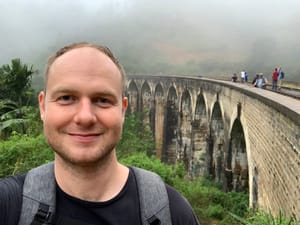

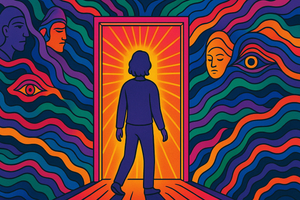


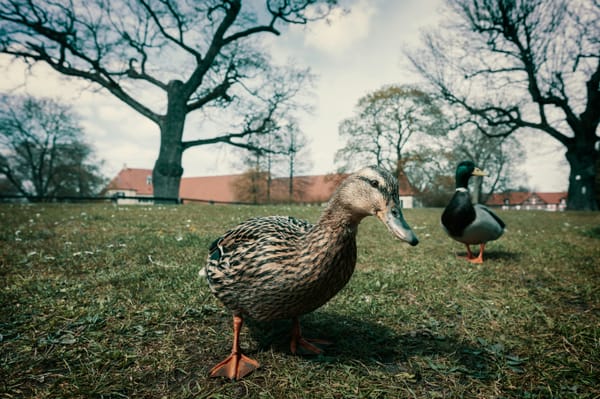
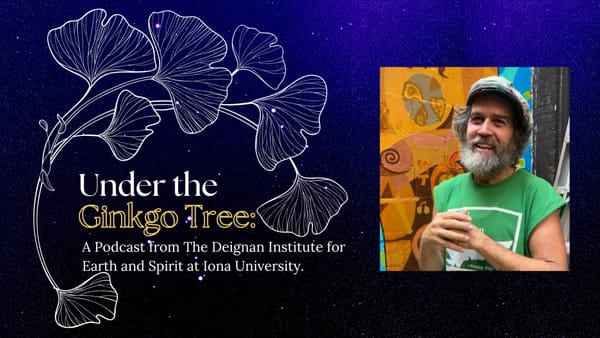
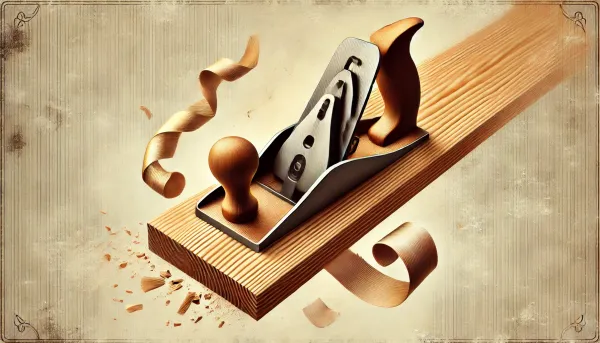
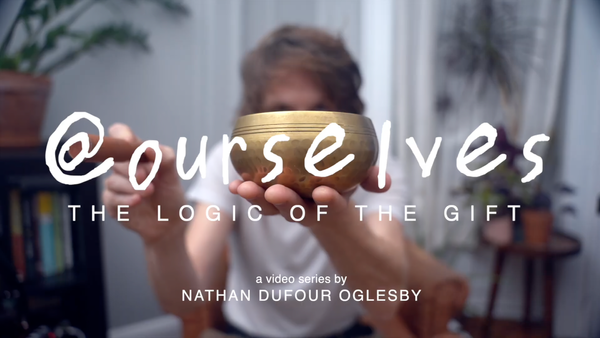
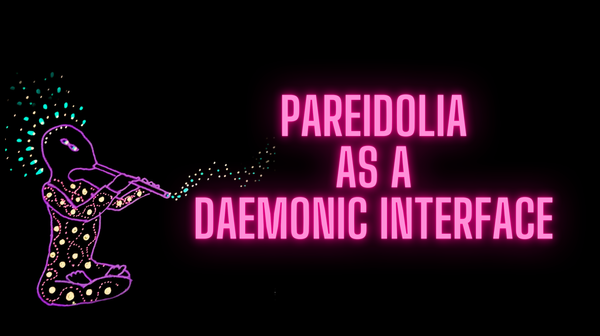
Member discussion